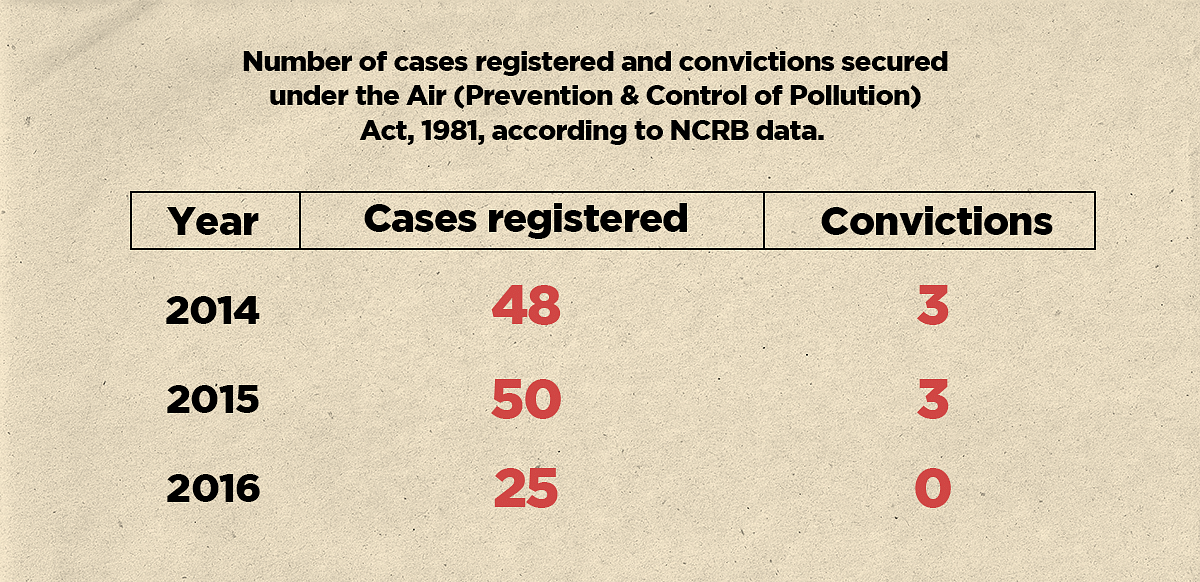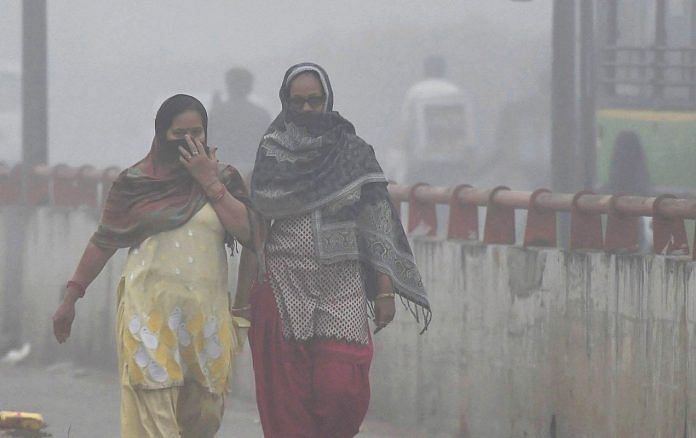Uttar Pradesh, the state with four of the world’s 10 most polluted cities, registered just two cases in 2016, NCRB data shows.
New Delhi: India, home to 14 of the 15 most polluted cities in the world in terms of PM 2.5 concentrations, has seen no more than six convictions between 2014 and 2016 under the country’s anti-pollution law, according to official data.
PM 2.5 are tiny air particles that can greatly increase the likelihood of respiratory and cardiovascular diseases.
While there were three convictions each in 2014 and 2015, not a single conviction was secured under the Air (Prevention & Control of Pollution) Act, 1981 in 2016 – the year in which Indian cities recorded the highest pollution levels.
Even the number of cases registered is no better. According to the latest data from the National Crime Records Bureau (NCRB), no more than 25 cases were registered from across the country under the air pollution law in 2016.
Uttar Pradesh — the state with four of the world’s 10 most polluted cities, according to the World Health Organisation (WHO) air pollution database — registered no more than two cases under the air pollution act in 2016.

In 2014 and 2015, the number of cases registered under this act was 48 and 50, respectively. While the number of cases registered reduced in 2016, the pendency rate in these cases increased from 35.3 per cent in 2014 to 98.6 per cent in 2016.
What does the law say?
The Air (Prevention & Control of Pollution) Act empowers the central and state pollution control boards to implement the provisions of this law. According to the act, sources of air pollution such as industry, vehicles, power plants, among others will be seen as flouting the law if they release toxic substances such as particulate matter, lead, carbon monoxide, sulphur dioxide, nitrogen oxide, and volatile organic compounds beyond a prescribed level.
Pollution boards across the country have been set up to test the air and measure the pollution levels at certain sources to check for violations of the law.
Why isn’t the law used?
The PCBs are empowered to give notices, file cases and drag entities for violation of the prescribed norms to courts, said a government official who did not wish to be named.
These boards clearly have enormous power to keep air pollution in check, yet they are filled with staff who don’t have the expertise to investigate cases and book people, the official said. Many times state pollution boards do not even have lawyers, he added.
There may also be a more fundamental issue with the way responsibility is pinned on individual entities for excessive emissions. “It may be that the number of people who broke the law in terms of permissible emissions is few, but the sheer number of people emitting permissible levels is too high,” said Ajay Mathur, director general of TERI, a non-profit body engaged in environmental research and policy making.
“The solution to that is strengthening emission laws for industries, vehicles, among others, and that is in process,” he added.
It is high time though that responsibility is fixed on polluters, said Parveen Kaswan, an Indian Forest Service officer. “To make our cities real smart we need to have a right mix of green, blue and grey infrastructure. And equally important are the laws protecting them,” he said.
“See how blockage of Mithi river in Mumbai creates annual flooding. Similarly, encroachment of wetlands in Chennai and Bengaluru are causes of urban flooding. It’s time to act in line with the polluters-pay principle,” Kaswan said.
The Central Pollution Control Board did not respond to requests for comment from ThePrint. This report will be updated when the board responds.






